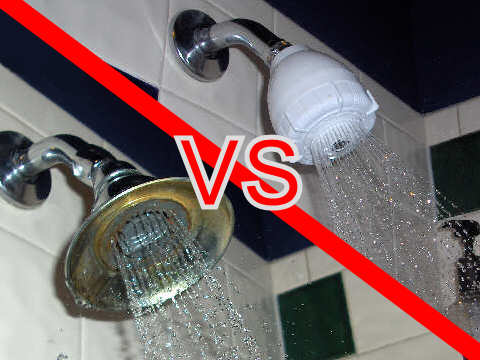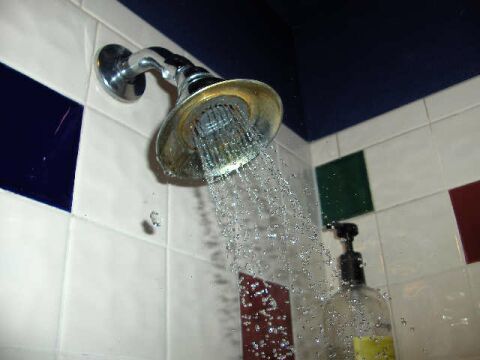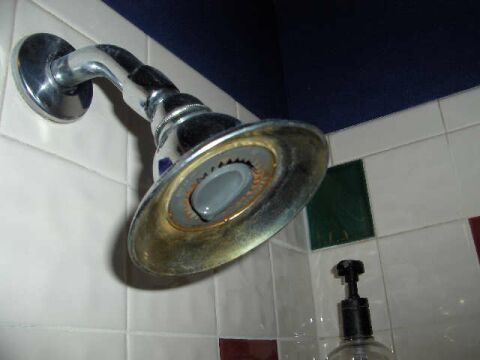I recently picked up a low flow shower head from my parents. However, I wasn’t sure of the flow rate of my current shower head. Was it worse, or better? Well, this is how I found out. Here are the two shower heads.
Original shower head. It says 2.5 gpm max on it.
Original shower head. It says 2.5 gpm max on it.
Low flow shower head. It says 2.0 gpm max on it.
To carry out the testing, I took an ice cream bucket I had laying around (1.125 gallons) and used it to catch the water comming out of the shower head. I timed how long it took to fill the bucket up with each shower head. Here are the results.
Original shower head = 40 seconds to fill = ~1.69 gpm
New low flow shower head = 35 seconds to fill = ~1.93 gpm
New low flow shower head = 35 seconds to fill = ~1.93 gpm
Aha, my original shower head which says 2.5 gpm max on it actually flows LESS than the one rated at 2.0 gpm max.
After that, I decided to play around just a bit more. On the original shower head, there is an adjustment in the middle. This lets you adjust the water stream size that comes out of the head. So, I snugged it up a bit and tested it again.
The results were quite good.
Original tweaked shower head = 53 seconds to fill = ~1.27 gpm
I think we have a clear winner here. I guess the lesson is to make sure you test your new ‘low flow’ fixture before you trust it. You also might be able to tweak your existing shower head. I was able to get a solid 25% reduction in flow just by adjusting the shower head.If you liked this post, please sign up for our RSS Feed to get updates.





{ 2 trackbacks }
{ 5 comments }
Yeah, the reason why your old shower head is apparently more economical, is commonly known as “rust” & “hard water sediments”.
Always “bucket-test” appliances that use water.
It’s really the only way to know for sure is to check the amount of water yourself.
Found out my new washer uses 20 gallons instead of 35 to 40 that my old one used.
Did that just by filling 5 gallon buckets during the rinse and spin cycles to find out the total water use.
I personally believe that a lot of these “low-flow” devices, like toilets and shower heads are false economy. Sure, they have reduced gpm, but I’ve usually found is that you use them twice as much/long which does not equate to any kind of real savings.
I bought a low low flow showerhead(1.5 gpm) from a company named Bricor. Upon buying I asked them “how do I know that the showerhead will run at 1.5 gpm?” They respoded that they just needed to know my static line water pressure from my shower pipe, and that by knowing this they would mathmatically make a custom showerhead for me.
Upon hearing that I went down to a hardwear store and bought a gauge for about $4.00. I went home unscrewed my showerhead, screwed the guage on and turned on the shower fauset. I received a rading of 55 psi. I called the company back and told them my reading and ordered a 1.5 gpm showerhed. Upon receiving my showerhead i was sceptical so I did a flow rate test. TO MY AMAZEMENT THE SHOWER HEAD PUT OUT 1.5 GPM!!!! I do not know how they did it, but it works. It also works alot better than my oxygenics
Hi Curt –
That’s a pretty good story, glad to hear that the company is living up to their word!
Comments on this entry are closed.